




Forgiving Roads Concept
The concept of forgiving roads is at the core of the Safe System approach.
The rationale is that errors are inevitable in the road transport system and should be accommodated by design. In the first place, the road design should allow adequate room for rectification of any errors. If the error cannot be corrected in time and a crash happens, the road design should still aim to limit the severity of casualties so that fatalities and serious injuries are avoided.
Forgiving design aims at limiting crashes to damage only or minor recoverable injuries. To the largest extent, decapacitating injuries should be avoided whereas there should be no life-threatening injuries or fatalities. Nevertheless, forgiving design is not restricted to road design, but also vehicle design and personal protection devices.
An important aspect of forgiving roads is to limit impact force which can lead to severe trauma. It is equally important to control crash mechanisms which can lead to severe consequences. These include all types of rollover, falls from height and penetration of sharp objects, and immersion into water bodies.
Prevention of fire or explosion is another important consideration. These events could have catastrophic outcomes, and even more the case if they happen in tunnels. For this reasons, design for quick response and evacuation is an important component for road safety design for such infrastructure.
Certain events can have secondary consequences which can be serious or even disastrous. Examples are collapse of structures due to impact, fall onto a busy road or encroachment onto railway tracks.
Speed Management
Regulating traffic speed to levels commensurate with the road environment is crucial to the delivery of forgiving roads. To build a safe road system and to reduce deaths and serious injuries, the human body’s tolerance to impact forces should be used as a guiding tool. Impact speeds for different vehicle crash types after which the risk of death escalates are:
- 70 km/h head-on impact
- 50 km/h side impact
- 30 km/h side impact with objects
- 30 km/h impact with pedestrians, bicyclists and motorcyclists.
This framework serves as general guidance only and may need to be more stringent where warranted by local road conditions, vehicle types and intensity of conflicts among users. Where higher speeds are required then enhanced road design is necessary to ensure that safety of all users.
Regulation of speed is attained within a framework of speed limit and speed limit for heavy vehicles and buses.
However, speed limit setting is not an effective speed management measure if used in isolation. It must be complemented by:
- Design of the road infrastructure which aligns with the desired travel speed, so that the road is self-explaining and that a driver or rider can more intuitively regulate their speed based on the look and feel of the road.
- Traffic calming measures such as raised tables or chicanes may be deployed to ensure compliance.
- Effective speed enforcement.
Some countries also impose lower speed limit for certain adverse weather conditions. Besides, it is important that operators of public transport and logistics set out clear guidance for drivers for specific road conditions.
Forgiving Roadside
Forgiving roadsides are conceived to permit drivers deviating from the travel lane to recover their paths as far as possible. This is attained by providing adequate paved or hardened shoulder. At merging areas and end of overtaking lanes, a zone of hatched markings is often desirable to permit an errant vehicle to overrun. This provides a margin to prevent collision with roadside objects or opposing traffic.
If the errant vehicle cannot recover and encroaches onto roadside, the objective is to permit the vehicle to safely traverse the roadside verge of gentle gradient and free of hazardous ground profile and objects. This roadside area beyond the travel lane is known as the clear zone which typical ranges from a few metres and up to 10m. Furthermore, the clear zone will need to be further increased on the outside of curves and at medians.
The clear zone is generally specified as the roadside of prescribed width. However, their extent is variable to take into account likely trajectory of an errant vehicle, for example, at street corners and roundabouts etc. Where clear zone is not practical or too costly, it could be more appropriate to provide continuous safety barriers. Some authorities nowadays do not advocate continuous wide clear zone as they need to be very extensive and can still result in rollovers.
Passively Safe Street Furniture are roadside equipment designed to deform in a controlled way so that the impact force is tolerable for occupants of an errant vehicle.
Safety Barriers and Attenuators are devices have been developed to contain and/or redirect an errant vehicle, but concurrently limiting the potential for injury in the impact.
In the broader sense of forgiving roads, adequate consideration is needed to permit stranded road-users to stop a vehicle well clear of traffic. Furthermore, it would be highly desirable that passengers can enter roadside areas protected by safety barriers.
Bicyclists and Motorcyclists
Cyclists and motorcyclists are highly vulnerable in a collision with vehicles. In general, speed management and traffic calming will benefit these users. They are susceptible to serious injuries to the head and other body parts in a fall or when they are launched to land onto the roadside.
Roadside safety design should aim at limiting the severity of trauma for these users by providing clear zones of soft ground surface and the removal, relocation or modification of roadside hazards. Hazard types could be specific to these users and include rigid objects of sharp or angular shapes and slender posts. Padding is a potential solution at critical locations. Parapets of appropriate design, height and layout are needed for bridges and along other drops.
The Star Rating Demonstrator is a freely available tool with the iRAP online software, ViDA. With the Star Rating Demonstrator, it is possible to explore the impact that this Safer Roads Treatment has on risk.
Treatment Summary
Case Studies
Related Images
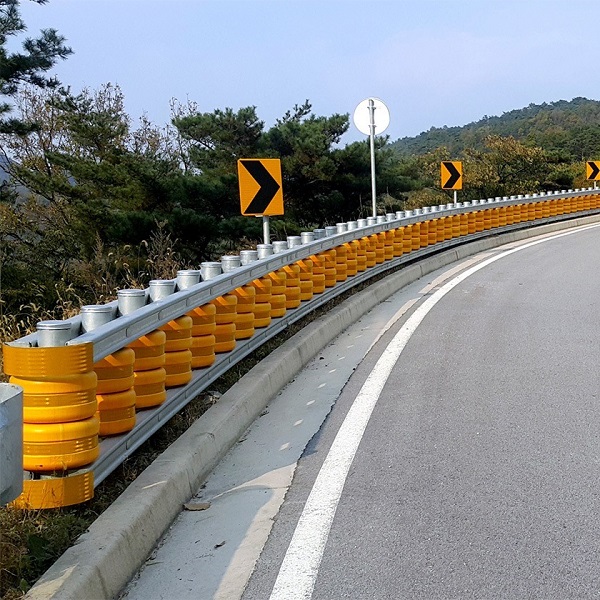 "Roller" safety barrier. Image credit: Unknown
"Roller" safety barrier. Image credit: Unknown A divided road in Ireland with 2+1 lane configuration and wire-rope median barrier. Image credit: EuroRAP
A divided road in Ireland with 2+1 lane configuration and wire-rope median barrier. Image credit: EuroRAP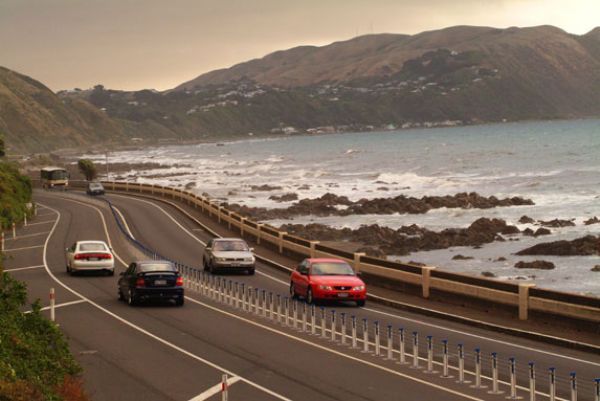 A wire-rope median safety barrier in New Zealand. Image credit: New Zealand Transport Agency
A wire-rope median safety barrier in New Zealand. Image credit: New Zealand Transport Agency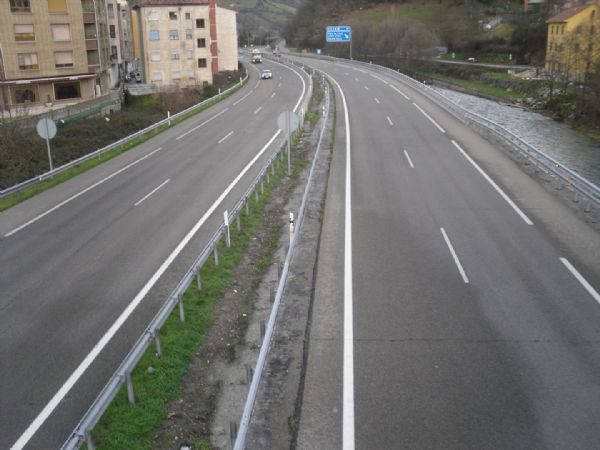 Duplication with median barrier in Asturias, Spain. Image credit: iRAP
Duplication with median barrier in Asturias, Spain. Image credit: iRAP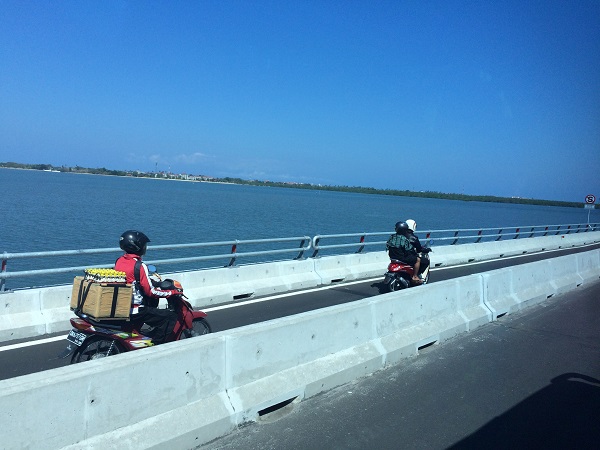 Exclusive motorcycle lane separated by concrete barrier. Image credit: Greg Smith
Exclusive motorcycle lane separated by concrete barrier. Image credit: Greg Smith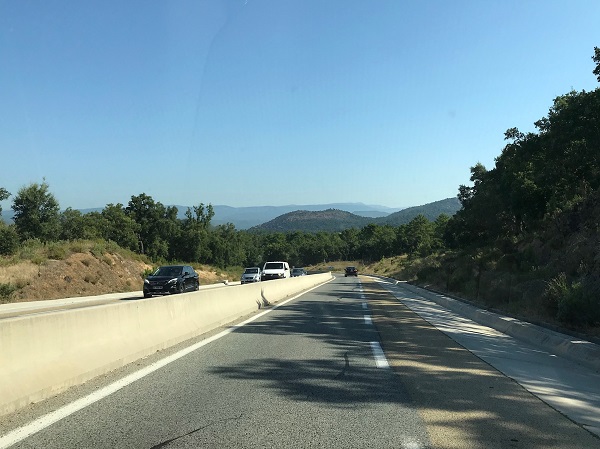 Concrete median barrier in France. Image credit: Unknown
Concrete median barrier in France. Image credit: Unknown










